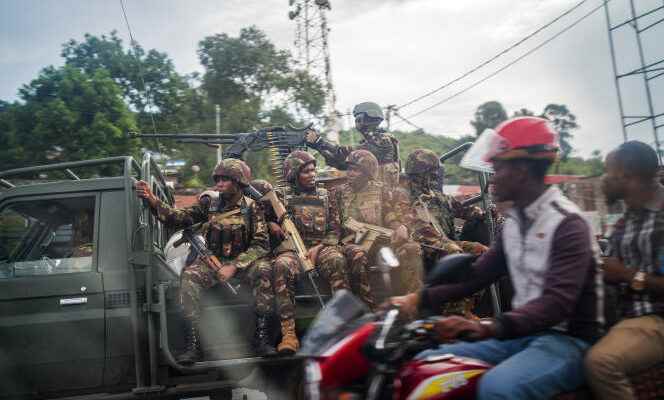To not miss any African news, subscribe to the newsletter of the “World Africa” from this link. Every Saturday at 6 a.m., find a week of news and debates covered by the editorial staff of the “World Africa”.
Less than a week after the announcement of a ceasefire, fighting resumed on Thursday 1er December, in eastern Democratic Republic of Congo (DRC). They oppose elements of the Armed Forces of the Democratic Republic of Congo (FARDC) to the rebels of the March 23 Movement (M23), a few tens of kilometers north of Goma, the capital of North Kivu. Not far from there, in the vicinity of Bambo, this same group reportedly clashed with elements of a local Mai Mai self-defense militia. According to the FARDC staff and the United Nations mission in the DRC, Monusco, dozens of civilians were allegedly “cowardly murdered”.
This new violence comes as leaders of armed rebel groups active in eastern DRC, representatives of civil society or the government, some 200 people, have been meeting since Monday, November 28 in Nairobi. Objective of this third round of inter-Congolese dialogue relocated to the Kenyan capital: “Find lasting solutions to the security situation [dans la partie orientale de la RDC] », in the words of the Community of East African States. But how can we claim to achieve this objective, when the most active armed group in recent months, the March 23 Movement, is excluded from the discussions?
North Kivu is under the influence of an offensive launched a year ago by this armed group that Kinshasa and its regional allies thought they had put down almost ten years ago, but whose resurgence reflects the impotence of the Congolese State to curb this crisis.
Several strategic towns located on the national road number 2 fell into rebel hands, as well as several border posts with Uganda. Admittedly, the M23 was stopped about ten kilometers north of Goma. But the group continues to progress under the cover of the forests carpeting the volcanic slopes of Masisi, threatening to cut the supply routes of the regional capital.
Rwandan support for M23
At least 350,000 people have been thrown onto the roads since the start of 2022, adding to the approximately 4.9 million Congolese already internally displaced for years due to recurrent violence in the North Kivu, but also in the neighboring provinces of South Kivu and Ituri, according to United Nations figures.
You have 66.24% of this article left to read. The following is for subscribers only.
